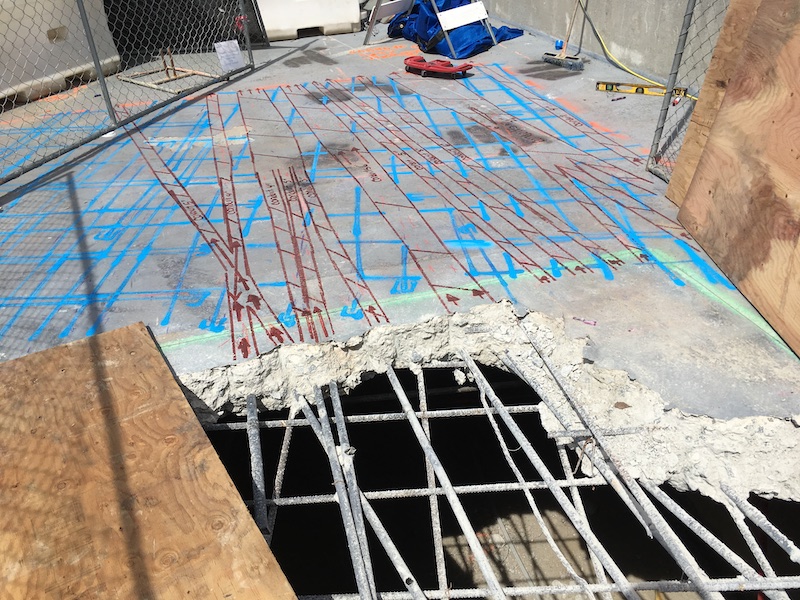Neighborhood RainierGPR Service Areas for Accuracy Concrete Scanning
Neighborhood RainierGPR Service Areas for Accuracy Concrete Scanning
Blog Article
Concrete Scanning: An Essential Step Towards Ensuring Architectural Stability and Safety And Security
In the realm of building and facilities maintenance, the importance of concrete scanning can not be overstated. This careful process holds the essential to unveiling potential dangers hidden beneath the surface area of apparently strong frameworks. By utilizing sophisticated technology and methodologies, concrete scanning serves as a pivotal device in making sure that the stability and security of structures and bridges are promoted to the highest possible standards. Nevertheless, beyond its surface-level ramifications, the duty of concrete scanning expands far deeper than fulfills the eye.
Value of Concrete Scanning
Concrete scanning plays an important role in ensuring the structural honesty and security of structures and facilities projects. By using innovative technologies such as ground-penetrating radar (GPR) and electro-magnetic induction, experts can non-destructively evaluate concrete structures to find potential issues, spaces, ingrained things, and reinforcement design. This process allows very early detection of anomalies that can jeopardize the security of a framework, preventing expensive damages and making sure the safety and security of occupants.
Concrete scanning is specifically important throughout the preparation and construction phases of a project. Before exploration, cutting, or coring into concrete, scanning helps determine the precise locations of rebar, post-tension wires, and various other ingrained elements, minimizing the threat of unintentional hits that might cause architectural weak points. In addition, concrete scanning help in quality assurance by confirming the thickness of concrete covers and identifying any inconsistencies that might influence the total longevity of the framework. Ultimately, buying concrete scanning services is not just an aggressive measure to alleviate dangers however likewise a fundamental action in the direction of keeping the long-lasting security and stability of structures and facilities.
Technology for Concrete Inspection

Benefits of Early Detection
Prompt discovery of architectural issues can dramatically mitigate risks and guarantee the long life of construction jobs. By determining potential issues at an early stage in the building and construction process, stakeholders can take aggressive actions to address issues before they escalate into larger and more costly problems. One of the essential benefits of early detection is the avoidance of structural failings, which can pose Click This Link serious safety hazards and lead to project delays and financial losses.
Furthermore, early detection permits prompt fixings and upkeep, which can assist prolong the life expectancy of the structure. By dealing with issues promptly, construction groups can stay clear of expensive repair work and even the requirement for premature replacement of architectural elements. This positive approach not just saves money and time but additionally improves the general safety and toughness of the building and construction job.
Furthermore, early discovery can enhance job planning and decision-making by giving stakeholders with useful insights into the problem of the framework. Equipped with this info, project managers can make informed selections relating to construction approaches, timelines, and products, causing much more effective and efficient job outcomes.
Making Sure Structural Security
Ensuring the structural stability of a building job is vital to its safety and security and long life. Concrete scanning plays a crucial role in guaranteeing structural stability by discovering prospective problems such as spaces, delamination, or reinforcement rust that can compromise the integrity of the structure over time.
By utilizing advanced scanning technologies like ground-penetrating radar (GPR) and electromagnetic induction, construction specialists can non-invasively evaluate concrete frameworks to determine areas of issue below the surface. This proactive strategy permits the very early discovery of flaws or weaknesses, making it possible for punctual repair services or support to avoid structural failures.
Normal concrete scanning throughout different construction phases and throughout the life process of a structure can help maintain its security, reduce risks, and make certain the security of residents. By prioritizing architectural stability with concrete scanning, construction tasks can improve their resilience and resilience, inevitably adding to greater safety and long life.

Stopping Vital Failings
To secure against tragic events, meticulous tracking and proactive upkeep are necessary in preventing critical failings within structural structures. Discovering possible problems prior to they intensify is vital to avoiding architectural failures. Applying routine assessments, such as concrete image source scanning, can reveal concealed defects like spaces, cracks, or rust that can jeopardize the honesty of a structure. By using sophisticated scanning technologies like Ground Passing through Radar (GPR) or Concrete X-ray, designers can non-destructively evaluate the problem of concrete and identify weak points that require reinforcement or repair service - RainierGPR Service Areas.

Final Thought
To conclude, concrete scanning plays a critical role in guaranteeing structural stability and security by utilizing advanced technology for early detection of possible concerns. This positive method assists avoid important failings their website and guarantees the security of structures. It is important to prioritize concrete evaluation as a conventional technique to protect the longevity and safety and security of structures and facilities.
Concrete scanning plays a critical role in ensuring the architectural honesty and security of buildings and framework projects. Additionally, concrete scanning help in top quality control by confirming the density of concrete covers and identifying any discrepancies that might impact the overall durability of the framework. Concrete scanning plays a critical duty in making sure structural security by spotting potential concerns such as gaps, delamination, or reinforcement deterioration that might compromise the stability of the framework over time.

In final thought, concrete scanning plays an essential duty in making certain structural honesty and safety and security by making use of innovative modern technology for very early discovery of potential issues.
Report this page